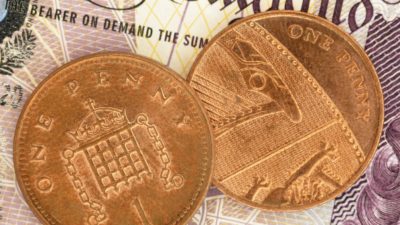We’re often told by financial experts that we should start saving for retirement as early as possible. That’s because the earlier you begin saving, the easier it is to build up a large nest egg. Due to the power of compounding (earning interest on your interest), it’s much easier to save up a large sum over an investment horizon of 40 years, as opposed to 20 years.
Yet in reality, many people don’t get started with their retirement saving until later in life. In your 20s, there’s often not much cash left over for retirement savings, while in your 30s, house deposits, weddings, and children can consume a large amount of cash. As such, retirement saving can be put on the back burner.
One million is still possible
However, the good news is that even if you start saving for retirement at 40, it’s still possible to build up a million-pound retirement portfolio by age 65. With a regular savings plan and a 25-year investment horizon, it’s possible to build up a very healthy savings pot that will set you up for a comfortable retirement. Here’s an example of a simple savings strategy that could get you to £1m by 65, starting at 40.
Passive income stocks: our picks
Do you like the idea of dividend income?
The prospect of investing in a company just once, then sitting back and watching as it potentially pays a dividend out over and over?
If you’re excited by the thought of regular passive income payments, as well as the potential for significant growth on your initial investment…
Then we think you’ll want to see this report inside Motley Fool Share Advisor — ‘5 Essential Stocks For Passive Income Seekers’.
What’s more, today we’re giving away one of these stock picks, absolutely free!
A million in 25 years
Let’s say you’ve just turned 40, have no retirement savings now, and you want a savings pot of £1m by age 65. Assuming you could generate an average annual return of 9% on your money, one way of achieving this would be to save £10,000 in the first year and then increase this amount of savings by 2% per year every year up to age 65.
In other words, in the second year, you’d save £10,200. In the third year, you’d save £10,404. According to my calculations, by age 65, you would have built up a sum of £997,496 – just a few thousand short of the magic million.
Now I realise that for many people, saving £10,000 a year could be challenging. For example, if you were earning £45,000 at age 40, £10,000 would equate to around 30% of your take-home pay. However, if your goal is to hit a million for retirement and you’re starting at 40, you might have to make some sacrifices to get there.
How to achieve a return of 9%
So, how do you generate a 9% return per year on their money over time? To achieve this, the best strategy, in my view, would be to invest in a cost-efficient growth portfolio that includes a range of funds, ETFs and stocks. It would be sensible to spread the capital out across a range of asset classes, including dividend stocks, growth stocks, and international stocks.
You’d also want to ensure that you’re saving as tax-efficiently as possible. This means saving within a Stocks & Shares ISA (where all capital gains and income are tax-free), or perhaps a Self-Invested Personal Pension (SIPP) and taking advantage of the tax relief on offer here.
With the right mix of investments, a low fee structure, and a tax-efficient account, I think a 9% return is certainly achievable.
In summary, while it’s not ideal to be starting a retirement portfolio at 40, the good news is that it’s still possible to build up a £1m portfolio by 65. The keys to this strategy are regular savings and a healthy rate of return on your money.







